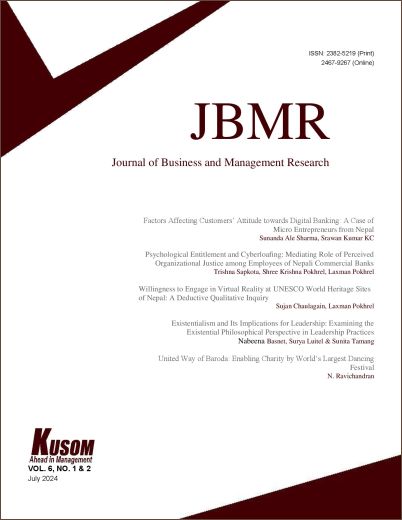Factors Affecting Customers' Attitude towards Digital Banking: A Case of Micro Entrepreneurs from Nepal
DOI:
https://doi.org/10.3126/jbmr.v6i1-2.76401Keywords:
Digital Banking, Attitude, Trust, Micro Entrepreneurs, Resistance to changeAbstract
This research examines the key determinants that shape the micro entrepreneurs attitude towards digital banking services in Nepal. The inquiry was conducted through the lens of the extended Technology Acceptance Model (TAM) by including trust and resistance to change as additional variables in the model. Since this study has been conducted for micro entrepreneurs (Safa Tempo drivers, beauty parlor owners, and street vendors) who have low level of education, low technical proficiency, and limited exposure to digital products, understanding their trust levels and propensity for change regarding digital banking is deemed crucial. This study found a significant positive relation between resistance to change and attitude towards digital banking. However, perceived usefulness, perceived ease of use and trust were not found to be positively associated with attitude towards digital banking. The findings of this study will enable Nepalese banking institutions to develop awareness programs aimed at educating and motivating micro entrepreneurs to embrace digital banking, thereby clarifying the benefits, addressing issues of trust and convenience, and ultimately fostering favorable attitudes and enhancing adoption rates. The study outcomes will also contribute to the existing literature by providing nuanced insights about the micro entrepreneur’s attitude towards digital banking services.
Downloads
Downloads
Published
How to Cite
Issue
Section
License
Copyright (c) 2024 Kathmandu University School of Management

This work is licensed under a Creative Commons Attribution-NonCommercial-NoDerivatives 4.0 International License.
This license enables reusers to copy and distribute the material in any medium or format in unadapted form only, for noncommercial purposes only, and only so long as attribution is given to the creator.




